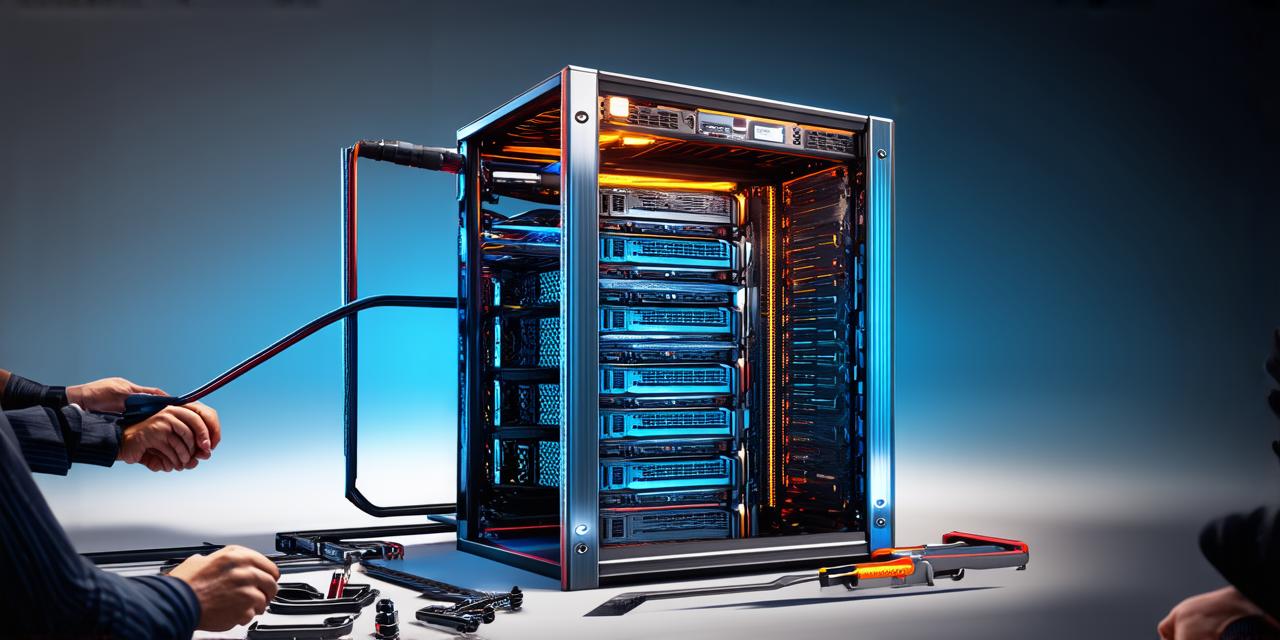Introduction:
If you are a web developer looking to create your own hosting server, you have come to the right place. In this article, we will guide you through the process of setting up your own hosting server, including how to choose the best server hardware, install an operating system, and configure your server for optimal performance. We will also discuss the benefits and drawbacks of having your own hosting server, and provide tips for managing it effectively.
Choosing the Right Server Hardware:
The first step in setting up a web hosting server is to choose the right hardware. The main factors to consider when choosing a server include its processing power, memory, storage capacity, and network connectivity. You will also need to decide whether you want a dedicated physical server or a virtual machine (VM) hosted on top of an existing server.
For high-traffic websites, a dedicated physical server is recommended as it provides the best performance and security. However, for smaller websites with low traffic, a VM may be sufficient and can save you money on hardware costs.
When choosing a server, it’s important to consider your budget, the type of website you are hosting, and the level of security and reliability you require. You can find servers from various vendors, including Amazon Web Services (AWS), Microsoft Azure, and Google Cloud Platform.
Installing an Operating System:
Once you have chosen your server hardware, the next step is to install an operating system. The most popular operating systems for web hosting are Linux (Ubuntu, CentOS, and Red Hat Enterprise Linux) and Windows Server. Each operating system has its own strengths and weaknesses, so it’s important to choose one that fits your needs.
Linux is a popular choice among developers because of its open-source nature, which allows for greater customization and flexibility. It also offers excellent security features and is often used with Apache or Nginx web servers. Windows Server, on the other hand, is easier to use and has built-in support for Microsoft technologies such as Active Directory and Exchange.
To install an operating system on your server, you will need to follow the installation instructions provided by the vendor. This may involve creating a bootable USB drive or CD/DVD, accessing the BIOS setup menu, and entering the installation details.
Configuring Your Server:
After installing an operating system, the next step is to configure your server for optimal performance. This includes setting up firewalls, configuring network settings, and installing software packages such as Apache or Nginx web servers, PHP or Python programming languages, and databases such as MySQL or PostgreSQL.
When configuring your server, it’s important to follow best practices for security and performance. This includes using strong passwords, keeping your software up-to-date, and optimizing your database queries to reduce response times. You should also configure your firewall to only allow traffic that is necessary for your website, such as incoming HTTP requests and outgoing emails.
Benefits and Drawbacks of Having Your Own Hosting Server:
Having your own hosting server has several benefits, including greater control over your website’s performance and security. You can also customize your server to fit your specific needs, without being limited by the features offered by a shared hosting provider. However, there are also drawbacks to consider, including the cost of hardware, maintenance, and management.
You will need to invest in hardware for your server, which can be expensive if you choose a high-end physical server. You will also need to pay for electricity and cooling costs, as well as maintenance and repairs. Additionally, managing a hosting server requires technical skills and knowledge, so you may need to hire a dedicated IT staff or outsource the management process.
FAQs:
1. What is the difference between a physical server and a virtual machine?
A physical server is a dedicated computer that is used solely for hosting websites, while a virtual machine is a software program that runs on top of an existing server, allowing multiple websites to share the same hardware resources.
2. How much does it cost to set up my own hosting server?
The cost of setting up your own hosting server will depend on several factors, including the type and size of the server, the vendor, and the level of management required. You can expect to pay anywhere from a few hundred dollars per year for a basic VM to thousands of dollars per year for a high-end physical server.
3. What skills do I need to set up my own hosting server?
To set up your own hosting server, you will need technical skills and knowledge in areas such as networking, operating systems, and web development. You may also need to hire a dedicated IT staff or outsource the management process if you don’t have the necessary expertise.
4. What are the benefits of having my own hosting server?
Having your own hosting server provides greater control over your website’s performance and security, as well as the ability to customize your server to fit your specific needs. You can also reduce costs by avoiding shared hosting fees. However, there are also drawbacks to consider, including the cost of hardware, maintenance, and management.
5. What are some common mistakes to avoid when setting up a web hosting server?
Some common mistakes to avoid include choosing an underpowered server, installing outdated software, and neglecting to configure security measures properly. It’s important to follow best practices and seek expert advice if needed.
Summary:
In conclusion, setting up your own web hosting server can be a rewarding experience that provides greater control over your website’s performance and security. However, it also requires technical skills and knowledge, as well as an investment in hardware and maintenance costs. By following best practices and seeking expert advice, you can set up a reliable and secure hosting environment that meets your needs.



